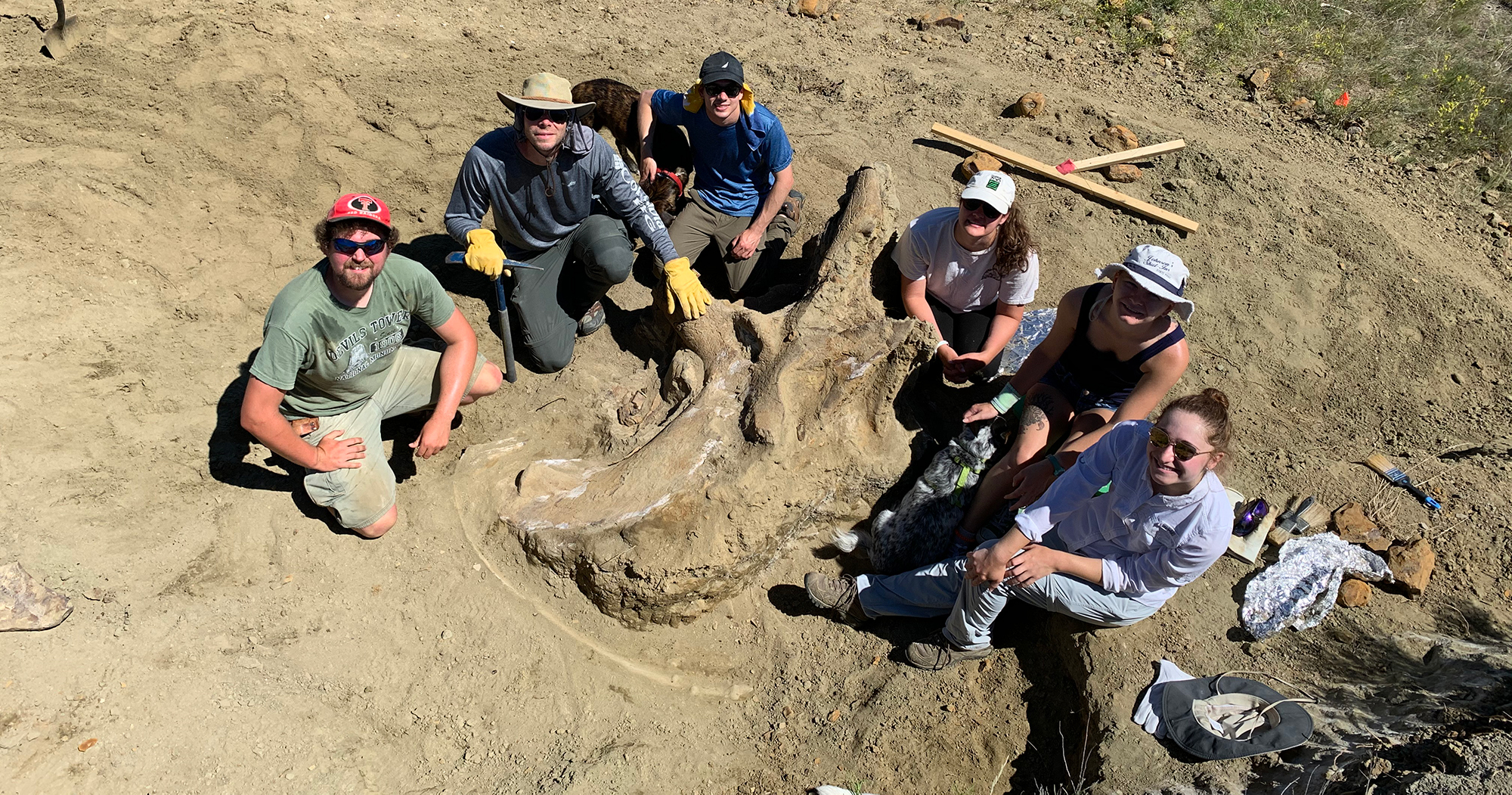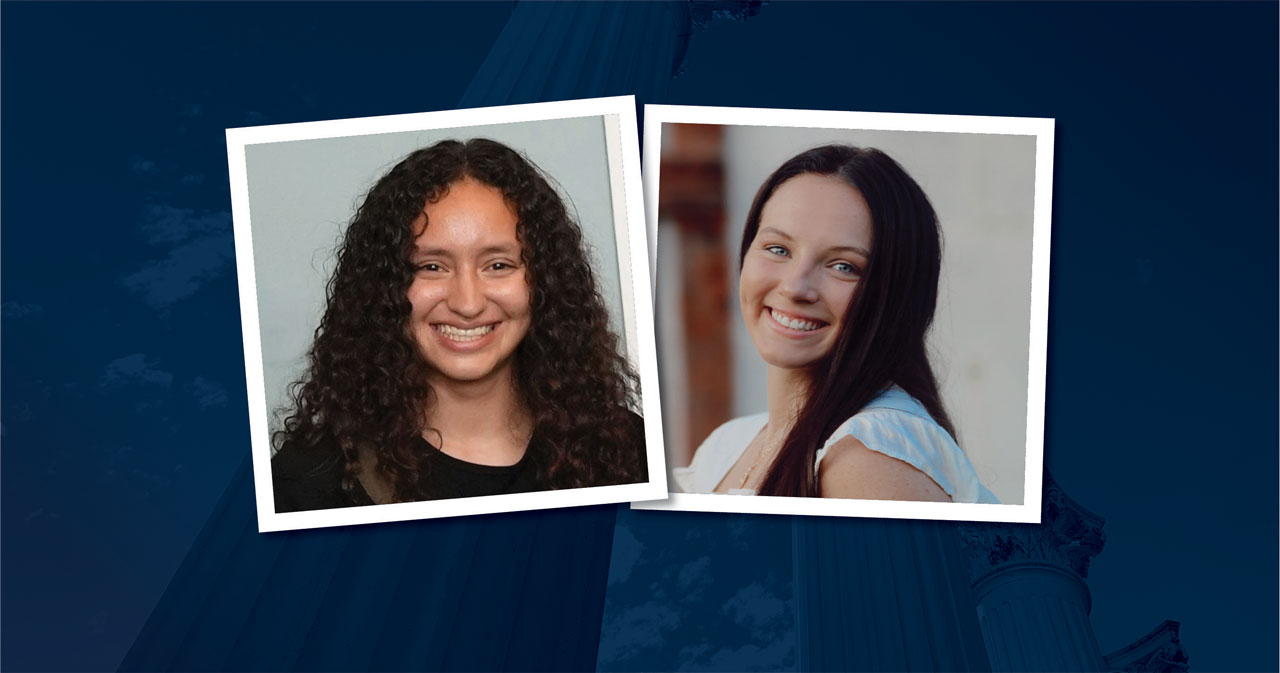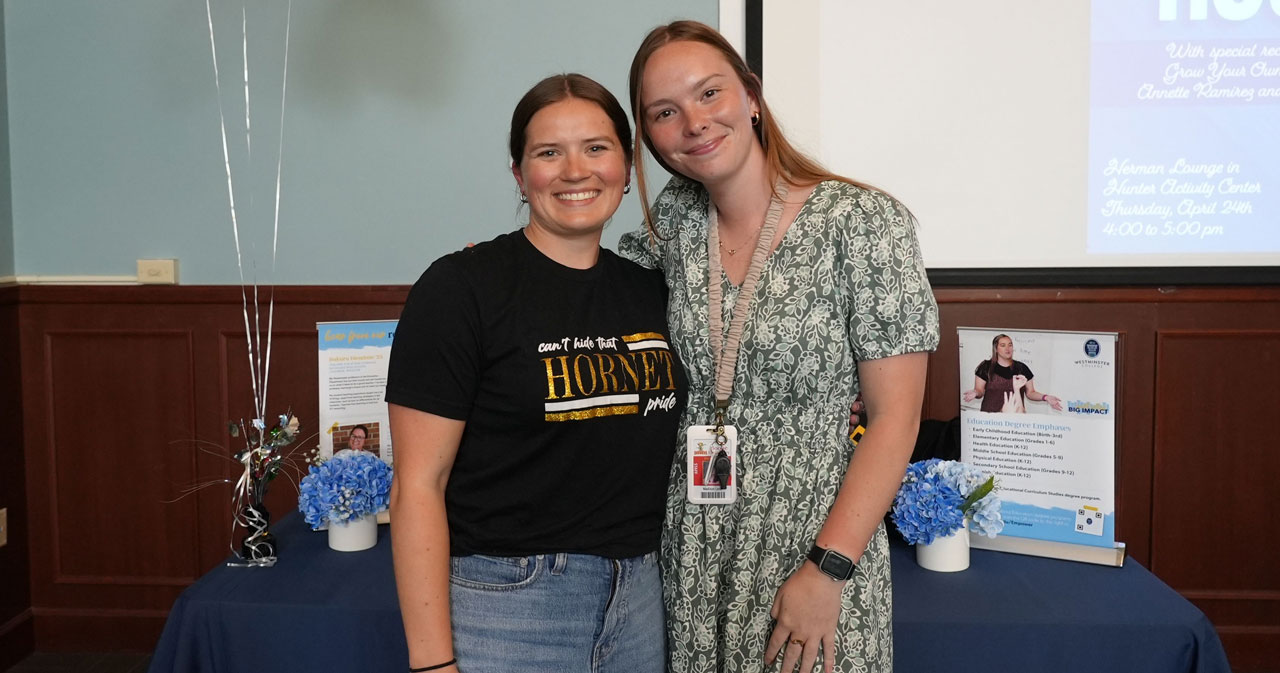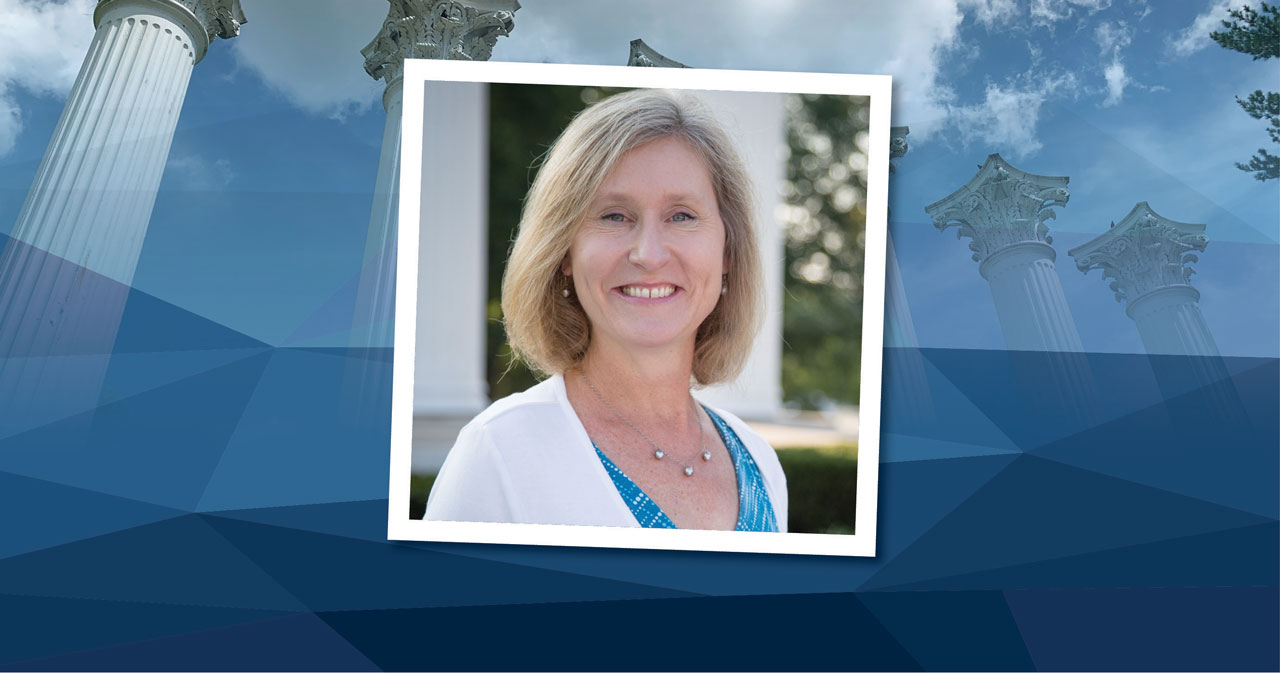From left: Garrett Williamson, Dr. David Schmidt, Tim Burridge, ’21, Meredith Bolen, ’16, Colette Faiella, ’21, and Sophia Hessenkemper, ’23, were shocked at the discovery of the 3,000-pound, 7-foot-long triceratops skull on their summer group excavation at the Grand River National Grassland near Shadehill, SD.
Undergraduate researchers from Westminster College are making national headlines after excavating and bringing to campus a 7-foot-long triceratops skull from the Badlands of South Dakota.
“It was so exciting … we just didn’t believe it,” recalls David Schmidt, Ph.D., Associate Professor of Geology and Environmental Science, who led the group excavation this summer. “Now we’re just living the dream out.”
Schmidt is referring to a childhood dream that began at the age of 5 when he found himself face to face with a hadrosaurus skeleton at the University of Kansas National Historical Museum in Lawrence. The experience affected Schmidt so profoundly that it led to a lifelong career of searching for treasure ― and his enthusiasm is contagious.
Three current students and four alumni joined Schmidt in June and July for his seventh Westminster fossil expedition at the Grand River National Grassland. He says the annual dig is extremely popular among Westminster students. This year, however, COVID-19 derailed plans, and course credit could not be offered.

Sophia Hessenkemper, ’23, and Tim Burridge, ’21, dig to expose more triceratops bone.
Students signed up for the excursion anyway.
“The Geoscience Field Course was canceled, but we were able to continue on a volunteer basis, camping safely outside the entire two months,” Schmidt explains.
During their field research, the Westminster group usually expects to find fragments of dinosaur bone and the occasional isolated, complete bone. But everything changed when a rancher discovered something unusual poking out of the earth along a slope as he repaired a fence in the summer of 2019.
The rancher alerted the National Forest Service, and their officials immediately contacted Schmidt, who had just arrived with his research group for the annual Westminster expedition. Schmidt’s standing permit with the forest service gave him permission to excavate the area.

Colette Faiella, ’21, rests beside the frill, or back, of the triceratops skull.
Schmidt concluded after careful examination that the object was the tip of a triceratops horn and would require months of careful excavation. He begrudgingly finished up his 2019 survey and made plans to return in the summer of 2020 after the Forest Service gave clearance for excavation.
Digging up the 3,000-pound triceratops skull — named “Shady” by students after community members of the nearby town of Shadehill, SD — made the student and alumni group giddy, begging to remain in the field this summer longer than the usual six to seven hours per day.
“They also just couldn’t wait to get out there each morning,” Schmidt adds.

Dr. David Schmidt oversees final steps before the triceratops skull is transported to Westminster College, where Shady now rests in a safe location.
Pick axes, shovels, a random telehandler, a backhoe, and a flatbed truck at long last brought Shady to the Westminster campus, where it is resting in a secure location until funds can be raised for restoration. The first order of business will be to enlarge the entrance to the Environmental Science laboratory in Coulter Science Center for Shady’s makeover. Other bones that remain in the South Dakota dirt will be dug up next summer.
Meanwhile, Schmidt is on sabbatical this semester and is antsy to return to the Badlands at the end of the year. He emphasizes that his students, not personal research or self-interest, are the ultimate focus of bringing Shady to Westminster.
He reflects, “The entire goal of this, at Westminster, is for students to use the fossil specimens for undergraduate research. So they have practical experiences and use learned skills in graduate school or in their career endeavors.”
To help with expenses associated with the care and keeping of Shady the Dinosaur, please consider donating here. Select Give to Westminster Online. Under Fund, select Other, and include “Shady” or “Dinosaur” in the Special Instructions field.







You must be logged in to post a comment.